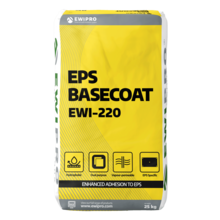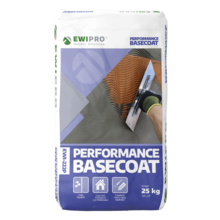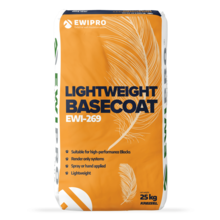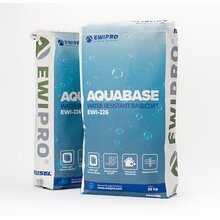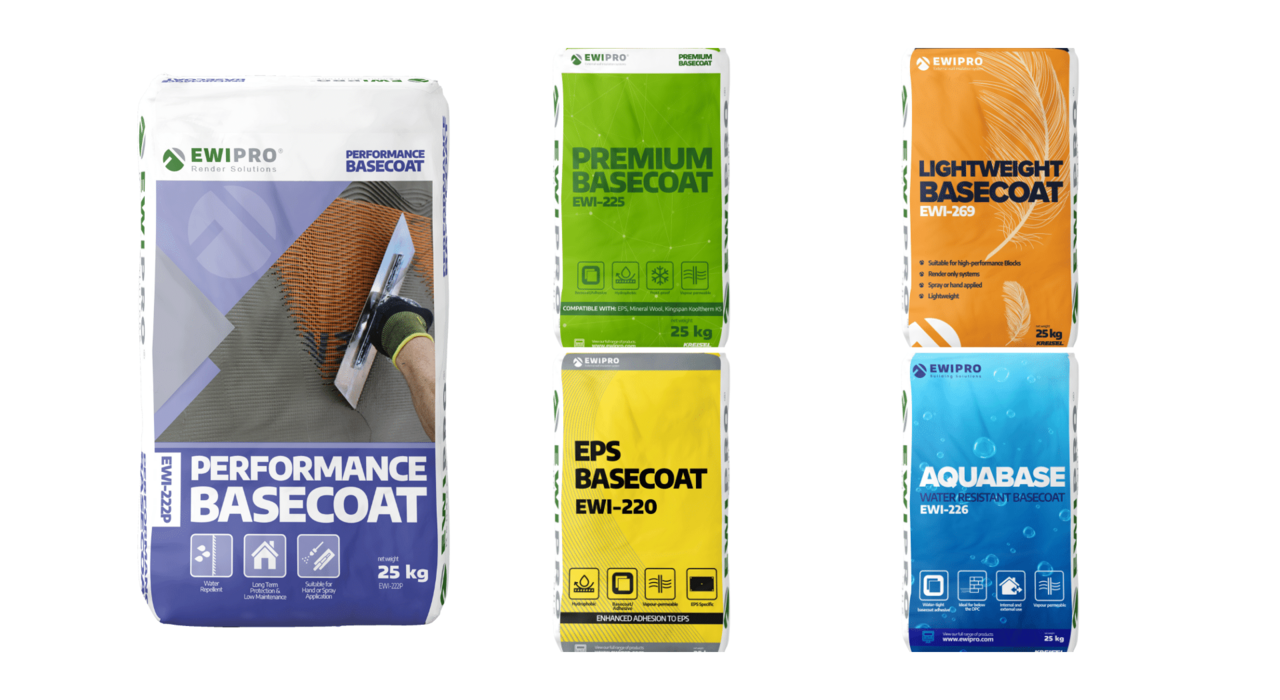
All basecoats stocked at EWI Store have their merits. However, determining which one is the best basecoat depends on your criteria. Perhaps you are installing insulation? Maybe you have a render-only project. Or you are just looking for the most flexible and breathable option. Thankfully, our choice of basecoats falls neatly into all of these criteria. As such, we will discuss the basecoats' benefits, drawbacks, and uses.
What kind of basecoats are there?
Basecoats can comprise several materials, all offering an inherent base of characteristics. The concept of a basecoat traces its roots back to Roman times. Lime-based mixtures coated houses and aqueducts and have evolved to be composed of natural or synthetic materials.
Cementitious
Primarily composed of cement, sand, and lime, these basecoats are robust and hard, withstanding harsh weather conditions, which makes them a popular choice for external applications. Often, you must add a reinforcing mesh layer to cementitious basecoats to control cracking. These basecoats, while less flexible than some other options, are suitable for environments that need a tougher basecoat. They work well with various finishes, including acrylic or cement-based render systems. However, their relatively low breathability may make them unsuitable for older buildings that need higher moisture transfer.
Acrylic
Acrylic basecoats, being resin-based products, offer good adhesion and flexibility. They are the go-to option when you need a flexible and water-resistant basecoat, such as on substrates that might experience movement or when you want a crack-resistant surface. Acrylic basecoats also resist UV radiation, making them durable for exterior applications. But similar to cementitious basecoats, they are less breathable compared to lime or gypsum-based basecoats.
Lime-based
Lime basecoats, made from lime, sand, and usually a small proportion of cement to improve setting and strength, are known for their high breathability. They let moisture from the building's interior escape, preventing condensation issues. Lime basecoats are also more flexible than cementitious ones, reducing their proneness to cracking. They are the ideal choice for older, heritage buildings and also those built with materials that need high moisture transfer. They work best under lime render or mineral paint finishes, which share similar breathable and flexible properties.
Gypsum-based
Gypsum-based basecoats contain gypsum as their main ingredient for internal plastering. They provide a smooth and durable surface that's ready for painting or wallpapering. Gypsum basecoats also offer good breathability, contributing to a healthy indoor climate by helping regulate humidity levels. However, they are less suitable for exterior use, as they are not as water-resistant as cementitious or acrylic basecoats. For external rendering, they are often used in sheltered areas or when finished with suitable weather-resistant coatings.
EWI Store basecoats
EWI-225
Our finest basecoat provides exceptional durability, flexibility, and durability. Moreover, it is a dual-purpose product that works as a basecoat and an adhesive. The versatility of the product also sets it apart. EWI-225 is ideal as a basecoat/adhesive for Mineral Wool, Kingspan K5 and Wood Fibre insulation boards, or as a render-only solution for a range of substrates, including render carrier board. EWI-225 is a cementitious mixture of white Portland cement and a high concentration of polymer-modifying binders. As a result, the strength is enhanced even further.
EWI-220
Our most popular EPS-compatible basecoat. The major selling point of this particular product is its dual-purpose use. As it is also a bedding adhesive, only one type of product is required on-site. Therefore, there is less wastage on site and disposal is simple. Moreover, there is no confusion about water mix proportions or usability time, eliminating potential errors which affect performance.
EWI-222P
EWI-222P Performance Basecoat is a polymer-rich cementitious
basecoat that works on many different substrates, providing a
breathable and water-repellent protective coat. You can use EWI-222P
on render-only projects as well as on different insulation materials
including EPS (where it is dual-purpose). A Silicone Render topcoat protects EWI-222P.
EWI-269
Lightweight Basecoat is used internally or externally and can be applied to high-performance blockwork, lightweight masonry structures, and stonework. One pass application is up to 25mm when machine-applied. EWI-269 Lightweight Basecoat is a breathable basecoat. Once dry, the basecoat provides a strong, flexible and waterproof layer.
EWI-226
Aquabase is a highly specialised product as it is designed specifically with water repellency in mind. As such, it forms a crucial part of our under-DPC range, along with XPS insulation boards and Mosaic Render.
So which is the best?
Plainly, the best basecoat is the one that suits your job. However, we will often recommend EWI-225 as our best product due to its versatility. However, the newly introduced EWI-222P possesses many of the same benefits.
All of these products require a Fibreglass Reinforcing Mesh layer. The mesh helps prevent cracks from forming in the basecoat or finishing layer. This is particularly useful in areas with significant temperature fluctuations, which can lead to thermal expansion and contraction of the wall materials, potentially causing cracks. The mesh provides a degree of flexibility that helps absorb these forces and prevent them from leading to damage. Fibreglass mesh also strengthens the basecoat layer, increasing its ability to resist impacts and pressure. This can be critical in high-traffic areas or environments subject to physical stresses.
When embedded into the basecoat, mesh helps maintain a uniform thickness across the surface, improving the overall quality and appearance of the finished wall. Mesh can help enhance the adhesion of the basecoat to the substrate, especially in EWI or other similar wall systems. The use of fibreglass mesh can increase the overall lifespan of the wall system, thanks to its resistance to weathering and decay.
Have you worked with our basecoats before? Which do you think is the best?


